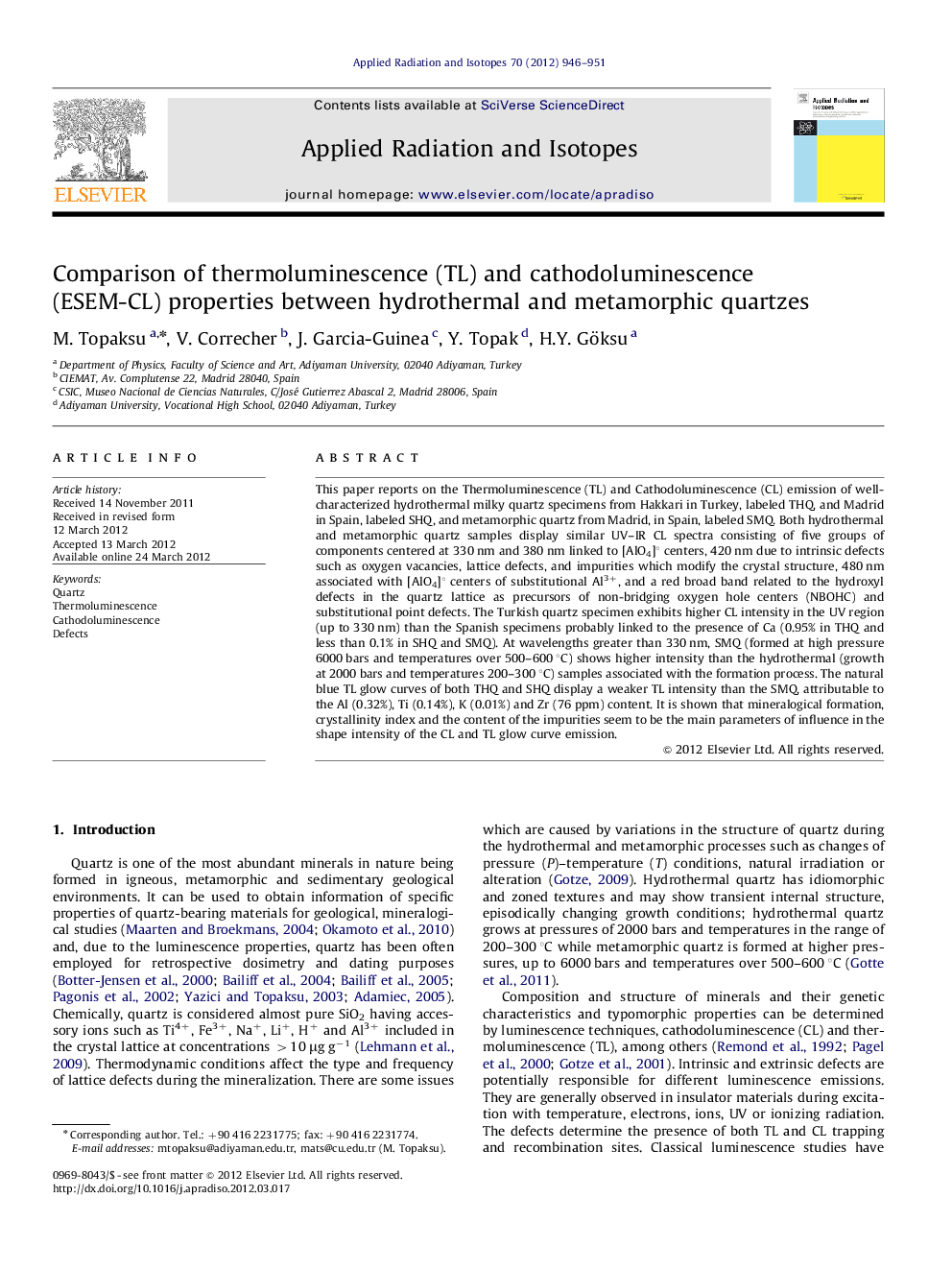| Article ID | Journal | Published Year | Pages | File Type |
|---|---|---|---|---|
| 1876326 | Applied Radiation and Isotopes | 2012 | 6 Pages |
This paper reports on the Thermoluminescence (TL) and Cathodoluminescence (CL) emission of well-characterized hydrothermal milky quartz specimens from Hakkari in Turkey, labeled THQ, and Madrid in Spain, labeled SHQ, and metamorphic quartz from Madrid, in Spain, labeled SMQ. Both hydrothermal and metamorphic quartz samples display similar UV–IR CL spectra consisting of five groups of components centered at 330 nm and 380 nm linked to [AlO4]° centers, 420 nm due to intrinsic defects such as oxygen vacancies, lattice defects, and impurities which modify the crystal structure, 480 nm associated with [AlO4]° centers of substitutional Al3+, and a red broad band related to the hydroxyl defects in the quartz lattice as precursors of non-bridging oxygen hole centers (NBOHC) and substitutional point defects. The Turkish quartz specimen exhibits higher CL intensity in the UV region (up to 330 nm) than the Spanish specimens probably linked to the presence of Ca (0.95% in THQ and less than 0.1% in SHQ and SMQ). At wavelengths greater than 330 nm, SMQ (formed at high pressure 6000 bars and temperatures over 500–600 °C) shows higher intensity than the hydrothermal (growth at 2000 bars and temperatures 200–300 °C) samples associated with the formation process. The natural blue TL glow curves of both THQ and SHQ display a weaker TL intensity than the SMQ, attributable to the Al (0.32%), Ti (0.14%), K (0.01%) and Zr (76 ppm) content. It is shown that mineralogical formation, crystallinity index and the content of the impurities seem to be the main parameters of influence in the shape intensity of the CL and TL glow curve emission.
► We reported on the TL and CL emission of well-characterized hydrothermal milky and metamorphic quartz specimens. ► Hydrothermal and metamorphic quartz samples displayed similar UV–IR CL spectra. ► Mineralogical formation, crystallinity index and the content of the impurities are effective in the shape intensity.
